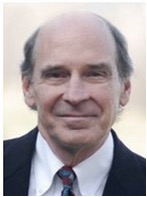(A review of 2015 ACO results appeared on The Health Care Blog on October 1, 2016.)
The Medicare Shared Savings Program (MSSP), or Accountable Care Organizations (ACOs), continue to be CMS’ flagship pay for performance (P4P) model delivering care via 432 MSSP ACOs located in every state to over nine million, or 16%, of Medicare beneficiaries. This year the agency did not announce 2016 performance year results. Instead, CMS posted without notice in late October a Public Use File (PUF) or spread sheet summarizing 2016 performance. What analysis CMS did provide was by CMS’ vendor, the Research Triangle Institute (RTI), several weeks ago to ACO participants via webinar. RTI’s slides are not made publicly available.
Like performance year one (2013), two (2014), and three (2015), performance year four (2016) once again produced limited positive results. As stated last year, CMS does not evaluate the ACO program, therefore, ACO participants and Medicare policy analysts are left to decipher how success was achieved, what performance results mean for the MSSP program and in context of the agency’s overall efforts to reduce Medicare spending growth.
2016 ACO Financial Performance Results
Here is a bulleted summary of 2016 financial performance based on the PUF and RTI’s slides.
- In 2016 there were 432 ACOs that had their performance year results reconciled.
- Of these, 410 were Track 1, six were Track 2 and 16 were Track 3.
- Of the 432, 134 earned shared savings or 119 out of 410 Track 1s, six out of six Track 2s earned shared savings and nine out of 16 Track 3s earned shared savings. Four Track 3 ACOs owed $9.33 million in shared losses. Only 129 actually received shared savings checks because five of the 134 owed CMS for advanced ACO payments.
- Physician only ACOs once again were more successful than ACOs that included a hospital, or 41% versus 23% respectively.
- Also again longer tenured ACOs were more successful. Among the 2012-2013 ACO class 42% were successful compared to 18% of the 2016 starters.
- The 134 2016 ACOs earned in sum slightly more than $700 million in shared savings. Actual savings paid out was close to $650 million because imperfect quality caused ACOs to leave money on the table and because of Medicare reimbursement or sequestration cuts required the 2011 Budget Control Act.
- For 2016 30% of participation MSSP ACOs will receive a shared savings check compared to 29% in 2016, 26% in 2015 and 27% in 2014.
- Earned shared savings were again highly concentrated. The 15 highest performing ACOs received $265 million total in shared savings as compared to the 15 lowest performing shared savings ACOs that received $20 million in total. An August DHHS Office of Inspector General (OIG) report made note of this dynamic, i.e., about half of the spending reductions during the first three years of the program, or $1.7 billion, were generated by 36 ACOs and three ACOs in that group generated a quarter of the amount.
- Of the remaining 294 2016 ACOs, 107 fell within their positive Minimum Loss Ratio (MLR) corridor, 105 fell within their negative MLR corridor and 82 fell outside their negative MLR corridor. This last group, the worst performing ACOs, was 19% of all 2016 ACOs, significantly less than the 24% of the worse performing 2015 ACOs.
- Again, success was largely determined by an ACO’s financial benchmark. ACOs that earned shared savings in 2016 had a reconciled benchmark 10% higher than all other ACOs, or respectively $11,614 per beneficiary versus $10,563 per beneficiary, or a benchmark 7% higher than those within their positive MLR corridor and 12% higher than those that fell below their negative MLR. The OIG report reached the same conclusion. During the first three years of the program, ACOs that received shared savings had a $11,748 per beneficiary benchmark compared to a $10,284 per beneficiary for ACOs that did not receive shared savings, a 12% difference. As noted last year, because of this successful ACOs only had to comparatively spend a trivial amount less than their financial benchmark to be successful.

 The opioid crisis has been upon us for years now
The opioid crisis has been upon us for years now
 I attended a Population Health conference this summer where a number of representatives from large health systems and physician organizations convened to discuss common challenges. Many of my healthcare colleagues assume that anything that carries the label “Population Health” must relate to health disparities and food deserts. While we do address these topics, the vast majority of sessions and conversations had one underlying theme: lowering the total cost of care.
I attended a Population Health conference this summer where a number of representatives from large health systems and physician organizations convened to discuss common challenges. Many of my healthcare colleagues assume that anything that carries the label “Population Health” must relate to health disparities and food deserts. While we do address these topics, the vast majority of sessions and conversations had one underlying theme: lowering the total cost of care. “It’s dead. It’s gone. There’s no such thing as Obamacare anymore. It’s no longer – you shouldn’t even mention.”
“It’s dead. It’s gone. There’s no such thing as Obamacare anymore. It’s no longer – you shouldn’t even mention.” I’m a pediatric oncologist, but cancer is not always the most serious problem my young patients face. Currently one of them, a 14-year-old boy, his mother, or both may be opioid addicts. I may be enabling their addiction.
I’m a pediatric oncologist, but cancer is not always the most serious problem my young patients face. Currently one of them, a 14-year-old boy, his mother, or both may be opioid addicts. I may be enabling their addiction.








